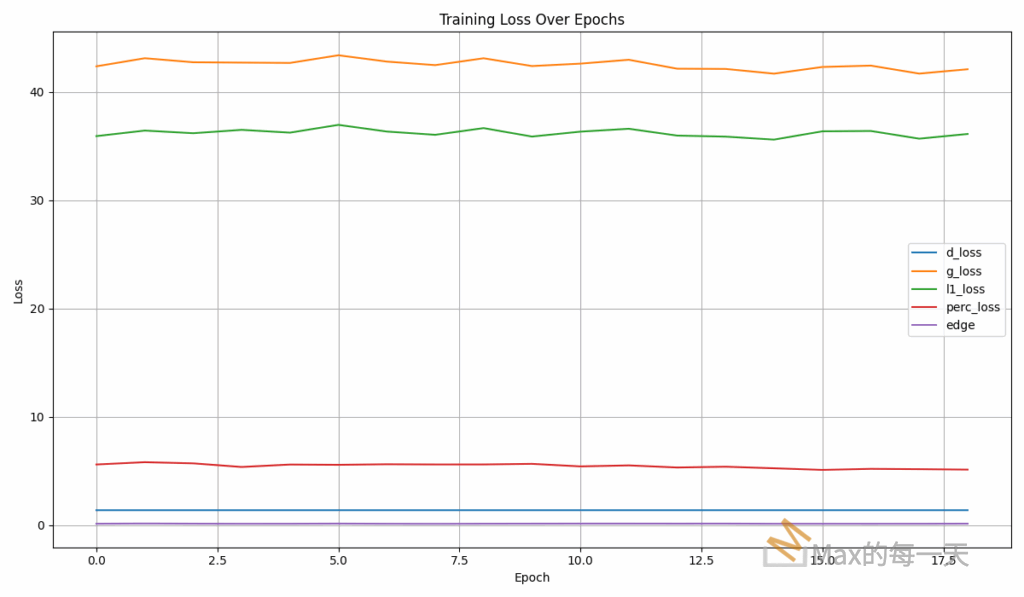根據你提供的需求,這裡是將 up_mode='pixelshuffle' 的邏輯改寫為一個**融合 skip connection 的可學習插值上採樣模組(Learnable Interpolation Upsampler with Skip Fusion)**的 PyTorch 實作範例,這個模組將:
- 使用可學習的上採樣方法(例如反卷積或卷積內插替代 PixelShuffle)。
- 支援 skip connection 的融合(concat → conv 或 add → conv)。
- 可整合進
UnetSkipConnectionBlock中。
✅ 自訂模組:LearnableInterpolationUpsample
import torch
import torch.nn as nn
import torch.nn.functional as F
class LearnableInterpolationUpsample(nn.Module):
def __init__(self, in_channels, out_channels, skip_channels=0,
mode='interpolate_conv', fusion='concat'):
"""
可學習的上採樣模組,支援 skip connection 融合
Args:
in_channels (int): 輸入特徵圖的通道數
out_channels (int): 上採樣後輸出的通道數
skip_channels (int): skip connection 的特徵圖通道數
mode (str): 上採樣模式 ['deconv', 'interpolate_conv']
fusion (str): 融合方式 ['concat', 'add']
"""
super().__init__()
self.mode = mode
self.fusion = fusion
if self.mode == 'deconv':
self.upsample = nn.ConvTranspose2d(in_channels, out_channels, kernel_size=4, stride=2, padding=1)
elif self.mode == 'interpolate_conv':
self.upsample = nn.Sequential(
nn.Upsample(scale_factor=2, mode='bilinear', align_corners=False),
nn.Conv2d(in_channels, out_channels, kernel_size=3, padding=1)
)
else:
raise ValueError(f"Unknown upsample mode: {mode}")
fusion_in_channels = out_channels + skip_channels if fusion == 'concat' else out_channels
self.fusion_conv = nn.Conv2d(fusion_in_channels, out_channels, kernel_size=3, padding=1)
self.activation = nn.ReLU(inplace=True)
def forward(self, x, skip=None):
x = self.upsample(x)
if skip is not None:
if self.fusion == 'concat':
x = torch.cat([x, skip], dim=1)
elif self.fusion == 'add':
# 自動對齊尺寸(可能因上採樣後有1px誤差)
if x.shape[-2:] != skip.shape[-2:]:
skip = F.interpolate(skip, size=x.shape[-2:], mode='bilinear', align_corners=False)
x = x + skip
else:
raise ValueError(f"Unknown fusion type: {self.fusion}")
x = self.fusion_conv(x)
x = self.activation(x)
return x
✅ 使用方式(在 UnetSkipConnectionBlock 中)
你可以這樣用:
self.upsample = LearnableInterpolationUpsample(
in_channels=inner_nc,
out_channels=outer_nc,
skip_channels=outer_nc, # 如果有 skip connection
mode='interpolate_conv', # 或 'deconv'
fusion='concat' # 或 'add'
)
在 forward():
x = self.upsample(x, skip_input)
如果你有特定需求(像是 batchnorm、FiLM、注意力或其他模組整合進來),我也可以幫你擴充這個模組。
需要我幫你整合到 UnetSkipConnectionBlock 裡嗎?還是你想要我幫你加到 UNetGenerator 版本?
這是一個非常好的問題,我來幫你詳細比較:
🔍 你目前有的兩種上採樣模組:
① PixelShuffleUpBlock(帶有 ResSkip 的 post_conv)
你先前的設計可能如下(大致邏輯):
# 假設原始 pixel shuffle upsample 模組
x = self.pixel_shuffle(x) # 上採樣(通道壓縮)
x = torch.cat([x, skip], dim=1) # skip fusion(通常 concat)
x = self.post_conv(x) # 後處理(通常包含 ResSkip 模塊)
這裡的 post_conv 如果是 ResSkip,可能是這樣的結構:
class ResSkipBlock(nn.Module):
def __init__(self, in_channels):
super().__init__()
self.conv = nn.Sequential(
nn.Conv2d(in_channels, in_channels, 3, padding=1),
nn.ReLU(),
nn.Conv2d(in_channels, in_channels, 3, padding=1)
)
def forward(self, x):
return x + self.conv(x)
功能特色:
- 快速上採樣(PixelShuffle 為乘2上採樣)
- 融合 skip features(通常為 concat)
- 使用 ResSkip 模塊對融合後的特徵進行 refinement
② LearnableInterpolationUpsample(內建融合與後處理)
x = self.upsample(x) # bilinear + conv 或 deconv
x = fusion(x, skip) # add / concat
x = self.fusion_conv(x) # 後處理 conv
其中的後處理只是簡單的 Conv + ReLU,不像 PixelShuffle 模塊那樣帶有殘差結構。
✅ 差異比較總結表
| 特性 / 模組 | PixelShuffleUpBlock + ResSkip | LearnableInterpolationUpsample |
|---|---|---|
| 上採樣方式 | PixelShuffle | ConvTranspose / Interpolate+Conv |
| 上採樣是否可學習 | ❌(PixelShuffle 本身不可學習) | ✅(ConvTranspose2d 或 conv) |
| Skip Connection 融合方式 | 通常使用 concat | 可選 concat / add |
| 融合後處理 | ✅ ResSkip 模塊(深度更深) | ✅ 但為單層 conv+ReLU(較輕量) |
| 後處理是否有殘差結構 | ✅ 是 | ❌ 否 |
| 計算成本 | 較低(PixelShuffle 計算快,post conv 通常淺) | 較高(包含上採樣卷積 + 融合卷積) |
| 表現彈性 | 中(固定 PixelShuffle 通道設計) | 高(可學習的上採樣結合 skip 融合策略) |
| 應用場景建議 | 適合計算預算有限、追求輕量部署 | 適合想要更精細的重建結果、允許更大計算量 |
✅ 實務選擇建議
- 若模型參數量限制嚴格、目標是推理速度快、部署在邊緣裝置上:
→ 使用PixelShuffle + ResSkip是比較好的選擇。 - 若你希望更平滑的上採樣、允許學習空間變化、模型表現導向:
→ 使用LearnableInterpolationUpsample會更適合,尤其是在文字風格遷移任務中能更好地控制細節重建。
⚡ Bonus 想法
你也可以把 ResSkip 加到 LearnableInterpolationUpsample 的 fusion_conv 後面:
self.resblock = ResSkipBlock(out_channels)
這樣可以結合兩者優點(可學習上採樣 + deeper post-processing)。
需要我幫你整合一個「可選擇開啟 ResSkip 的 LearnableInterpolationUpsample」版本嗎?
是的,LearnableInterpolationUpsample 確實可以在一定程度上解決 staircase artifact(樓梯狀偽影)問題,而且效果會比 PixelShuffle 更好,以下幫你詳細說明原理與機制。
🧱 什麼是 Staircase Artifact?
樓梯狀偽影是上採樣(特別是非學習式)操作中常見的問題,特別在使用:
nearest-neighbor或bilinear插值PixelShuffle(若上層特徵粗糙)- encoder-decoder 中跳接位置上下文不連續
產生的圖像邊緣會呈現「一階一階」的 stair-like edge,不自然或不連續。
✅ 為什麼 LearnableInterpolationUpsample 能減少 stair-case?
📌 原因 1:使用可學習的上採樣
你用的 LearnableInterpolationUpsample(例如 ConvTranspose2d 或 Upsample + Conv)是具備可學習權重的。這表示模型可以學會如何在上採樣過程中平滑地重建細節。
相比之下,PixelShuffle 雖然沒有插值的 artifact,但它的輸出過於依賴低解析度特徵通道,若輸入特徵粗糙會直接反映為階梯邊緣。
📌 原因 2:融合 skip connection
你的模組會融合 encoder 特徵(如:concat 或 add),這提供了原始解析度的紋理資訊,有助於補充細節與空間連續性,避免產生 stair-case。
📌 原因 3:融合後的 fusion_conv 可進一步學習邊緣重建
即使上採樣後仍有輕微的 stair-case,後處理的 Conv 或 ResBlock 可以學習去平滑、銳化邊緣、去除 artifact。
🔬 比較:PixelShuffle vs Learnable Upsample
| 特性 | PixelShuffle | LearnableInterpolationUpsample |
|---|---|---|
| 可學習性 | ❌ 不可學習 | ✅ 可學習上採樣權重 |
| Staircase 抑制能力 | ⚠️ 弱(尤其輸入特徵不足時) | ✅ 強(能學會如何填補像素) |
| 紋理與邊緣細節重建能力 | 中(需搭配強 skip fusion) | 高(可訓練重建連續紋理與細節) |
| 計算成本 | 輕量(快) | 稍高(需額外 conv) |
✨ 結論
- ✅
LearnableInterpolationUpsample能有效緩解 stair-case artifact - 🚫 但不是保證完全消除(仍需搭配 skip feature、正確 loss、可能額外加入 edge-aware loss)
- 💡 如果你追求品質而不是極限速度,它是一個值得採用的設計
如果你有示例輸出出現 stair-case,我也可以幫你診斷是哪一層引起,或者設計一個 edge-aware loss 專門針對這類問題處理~要幫你補一段改進的模組嗎?
你提出的問題非常精準:nn.Upsample 是非參數化的操作,因此無法學習更符合任務的上採樣方式,導致風格轉換等任務的學習效率與最終品質都會受限。
✅ 改進 interpolate_conv 模式的幾種策略:
我們可以保留 interpolate + conv 架構的概念,但透過 參數化內插權重、學習式引導、動態調整 feature 來提升效率與學習能力。以下是幾種方式:
🚀 方法一:升級為 SubPixel Conv(PixelShuffle)
用 Conv → PixelShuffle 替代 Upsample → Conv,是一種更有效率的 learnable interpolation。這本質上也是「學習式內插」,常用於超解析、風格轉換任務。
elif self.mode == 'subpixel':
self.upsample = nn.Sequential(
nn.Conv2d(in_channels, out_channels * 4, kernel_size=3, padding=1),
nn.PixelShuffle(2)
)
✅ 優點:效率高、參數量小、可學習
❌ 缺點:可能不如 CARAFE 柔性
🚀 方法二:使用深層可學卷積替代 Upsample(「dense conv up」)
原本:
nn.Sequential(
nn.Upsample(scale_factor=2, mode='bilinear', align_corners=False),
nn.Conv2d(...)
)
替代為 stride=1 + padding=’same’ 的可學卷積堆疊來模擬內插,甚至加入 gating:
elif self.mode == 'conv_only_up':
self.upsample = nn.Sequential(
nn.Conv2d(in_channels, out_channels * 4, kernel_size=3, padding=1),
nn.GELU(),
nn.PixelShuffle(2),
nn.Conv2d(out_channels, out_channels, kernel_size=3, padding=1)
)
✅ 優點:完全可學,替代硬編碼 Upsample
✅ 加入非線性(ReLU/GELU)可提升效果
✅ 可與 FiLM、Attention 等模塊結合
❌ 參數稍微多一點
🚀 方法三:加權跳接內插(Feature-wise Gated Fusion)
若想保留 interpolate_conv 結構,可用 gating(可學權重)來融合原圖與上採樣結果:
# 在 __init__ 中加入
self.gate = nn.Sequential(
nn.Conv2d(out_channels * 2, out_channels, kernel_size=1),
nn.Sigmoid()
)
# 在 forward() 中
interpolated = self.upsample(x)
if skip is not None:
x = torch.cat([interpolated, skip], dim=1)
gate = self.gate(x)
x = gate * interpolated + (1 - gate) * skip
else:
x = interpolated
✅ 優點:仍使用 bilinear,但透過 gating 融合 skip 特徵與上採樣結果,有學習能力
❌ 複雜度略增,但有效提升學習能力與質感
✅ 綜合建議
| 方法 | 是否可學 | 效率 | 成熟度 | 建議用途 |
|---|---|---|---|---|
bilinear + conv | ❌ | 高 | ✅ | baseline、快速測試 |
subpixel | ✅ | 高 | ✅ | 高解析輸出、資源有限任務 |
conv_only_up | ✅ | 中 | ✅ | 對上採樣品質要求較高任務 |
gated interpolate | ✅ | 中 | 🟡 | 對 skip-feature 融合有要求 |
carafe / meta_upsample | ✅ | 中偏高 | ✅ | 高品質、學習式內插任務(字型風格) |
✨ 若你想提升 interpolate_conv 模式品質又不改太多架構
推薦使用 subpixel 模式(PixelShuffle)或 conv-only-up 模式(替代 Upsample),兩者都能極大提升可學性與效果,特別適合風格轉換這類需要 fine-grain 細節保留的任務。
需要我幫你實作其中一種版本整合到原始 LearnableInterpolationUpsample 嗎?或者你想設計 hybrid_interpolation 模式,根據輸入大小/特徵選擇不同方式?
